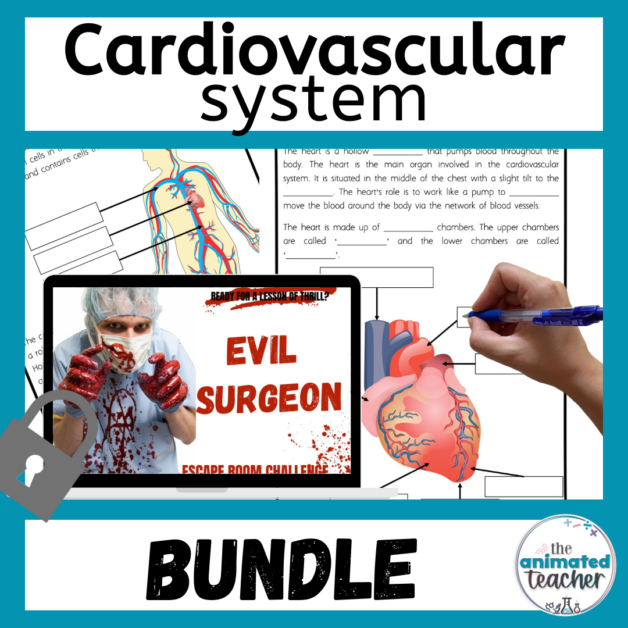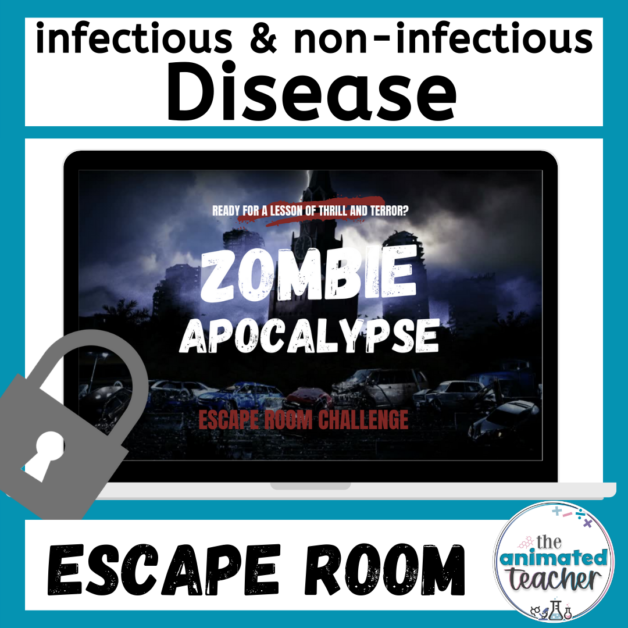
10 easy differentiation ideas using AI tools for teachers
10 easy differentiation ideas using AI tools for teachers
Trying to differentiate different learning experiences for your students can be an overwhelming endeavour with everything else on your plate! AI-powered platforms such as Google’s Gemini AI or ChatGPT, can make differentiation easy by helping generate content for resources or coming up with different approaches and new ideas for how to make learning accessible for each individual student. Let me save you time with these easy differentiation ideas using AI tools!
While the use of artificial intelligence can be a contentious subject in education, i am a firm believer in working smarter, not harder. AI provides access to different ways of differentiating that we would not otherwise have the time to consider as a classroom teacher. These ideas and prompts provide new ways to differentiate that are easy to work into your normal lesson planning without adding extra work.
Who would’ve thought we could utilise AI as a differentiation tool?!
Differentiation ideas using AI for teachers

Prompts and easy differentiation ideas for teachers using AI tools
Tips for writing AI prompts for differentiation:
-
Be specific – don’t ask open-ended prompts, rather be as specific as possible.
-
Include the age of the students or the grade you want it to be aimed for.
-
Ask to regenerate with additional prompts
-
Always fact check content that is generated directly from AI
-
Ask a series of prompts rather than all at once (particularly if asking to generate passage type content – get it right first before asking it to generate questions etc).
Differentiation ideas using AI for teachers
The below prompts have been written for specific grade levels and subjects as an example, but you can tailor them to suit all grade levels and different subjects to suit the diverse learners in your context.
Differentiation ideas using AI for teachers
Differentiation of the content
Ensuring each student starts where they need to. Here are some of the best ways to differentiate the content with AI.
1. Reading levels: By providing different reading levels for reading passages, you will be able to make it accessible to all your students. Generative AI makes this possible quickly and effortlessly for you! You can either provide the passage if you have a resource you like and ask it to change the reading level, or ask it to generate the passage for you.
Example Prompt: This passage has been written at a grade 9 reading level. Adjust the following passage to be suitable for a grade 7 reading level and then a grade 11 reading level.
Differentiation ideas using AI for teachers
2. Then… Differentiated cloze passages
For each of the passages above you could turn them into cloze passages or just do it for the grade 9 reading level as an extra extension.
Prompt: Turn the following into a cloze passage replacing key words with underscores that replace the missing words. Provide a word bank of the missing words.
3. Differentiated questions
Example 1: Comprehension
Prompt: For the following article, create differentiated questions at three different levels (easy, medium and hard). For the easy level, only include comprehension questions. For the medium and hard levels include a couple of critical thinking or open-ended questions. Each level needs to have 10 questions total. This resource will be used with grade 7 science students.
Example 2: Math calculations
Prompt: For the topic, pythagoras theorem, create a list of calculation questions at 4 different levels of difficulty. Each level needs to have 10 questions. Use language and content suitable for grade 7 or 8 math students.
4. Generate a glossary of key terms
Prompt: Generate a glossary for the following key terms at three levels of differentiation.
Kinetic energy, potential energy, gravitational potential energy, elastic potential energy, chemical potential energy, mechanical energy, light energy, heat energy,
5. Create printable worksheets
Prompt: Generate content for 3 worksheets given the following information:
Worksheet 1
Subject: Science
Grade Level: 7
Topic: Classification of living things
Difficulty Level: Easy
Number of Questions: 10
Worksheet 2
Subject: Science
Grade Level: 7
Topic: Classification of living things
Difficulty Level: Medium
Number of Questions: 10
Worksheet 3
Subject: Science
Grade Level: 7
Topic: Classification of living things
Difficulty Level: Hard
Number of Questions: 10
Other prompt ideas:
-
Could also add: types of questions (e.g. MC, short answer, cloze passage, mix and match)
-
Also ask for it to generate teacher answer keys. This is also a good way for AI to check for its own mistakes.
-
Note: cannot generate a pdf directly but can be copied and pasted into a word doc etc.
Differentiation ideas using AI for teachers
6. Come up with differentiation options for specific lessons
Prompt: Design a lesson plan suitable for a grade 7 science class on the topic of states of matter. Provide differentiation options. Make it super low prep with limited materials.
Prompt: Design a sub lesson plan suitable for a grade 7 science class on the topic of states of matter. Provide differentiation options. Make it super low prep with limited materials. Write the sub lesson assuming the sub teacher has no knowledge of the subject matter.
Differentiation ideas using AI for teachers
Differentiation of the process
Changing the method for how students engage with the learning. Changing the way students engage with their own learning can help to meet the diverse learning needs in the class as well as increase student engagement.
Differentiation ideas using AI for teachers
7. Provide sentence starters / sub headings / websites
Prompt #1: For the following question, provide a range of sentence starters to help students get started.
Discuss the impact of plastic pollution on marine ecosystems and the animals that live there.
Prompt #2: For the following question, provide a range of sub headings help students get started and organise their information.
Discuss the impact of plastic pollution on marine ecosystems and the animals that live there.
Prompt #3: For the following question, provide a range of reliable websites that are relevant and suitable for a grade 7 student to help them source correct information.
Discuss the impact of plastic pollution on marine ecosystems and the animals that live there.
Differentiation ideas using AI for teachers
8. Provide a scaffold
Constructing a scaffold for longer questions or assessment tasks can take a significant amount of time. A.I tools can help to do this within a few seconds. While you may like to edit the responses, it means you aren’t starting from scratch.
Prompt: The following is a question for a year 11 chemistry assignment. Provide a scaffold to assist a student to complete this task in a logical and organised manner.
9. Provide step by step instructions
In the realm of education, there are many areas you can provide instructions for, whether it be how to answer a type of question, how to go about completing an assessment task or how to complete regular class content. By breaking down instructions into steps, students who struggle with processing and students with special needs will be able to access the content more easily.
Prompt #1: Provide step by step instructions for a student to help them attack this problem solving question:
A right angled triangle has adjacent sides measuring at 3.3cm and 5.4cm. Calculate the length of the hypotenuse.
Prompt #2: Provide a scaffold for a student to help them design their own experiment to test how the concentration of hydrochloric acid affects the rate of reaction with magnesium.
Prompt #3: Provide step by step instructions for a student to help them attempt this assessment task question: “Discuss the impact of the Industrial Revolution on society during the 18th and 19th centuries. In your response, consider how technological advancements, changes in the economy, and shifts in social structure influenced people’s daily lives. Include specific examples of both positive and negative effects, and explain how different groups of people (such as factory workers, business owners, and women) were affected by these changes.” Differentiation ideas using AI for teachers
10. Differentiation of assessment
AI technology can be used to help differentiate assessment tasks.
Prompt 1: construct a take home assessment task / project suitable for grade 8 science to cover this syllabus point: ‘Explain how a disorder or disease affecting the components of a body system, or the removal of any component in the body system, impacts on the overall functioning of the system and the organism as a whole’.
Include differentiation options.
Prompt 2: Create a complete marking rubric for the above assessment task that takes into account the differentiation options. The rubric should have 5 columns with criteria for what an answer at each grade level (A, B, C, D, E) looks like.
Differentiation ideas using AI for teachers
Other ideas to help save time using AI tools:
-
Assessment design
-
Differentiate the product ideas
-
Generating assessment ideas for students at various levels
-
Use AI in real time to come up with ideas for early finishers
-
Report comments
-
Sub lesson plans
-
Addressing specific disabilities
-
Extension options – specific topics for more depth etc.
-
Administrative tasks e.g. email writing
Differentiation ideas using AI for teachers
Conclusion
Artificial intelligence tools are here to stay and can play a significant role in saving us time as classroom teachers. AI can help us support our struggling students and make the learning process accessible to all students. While I hope artificial intelligence will never replace human intelligence in the classroom, it can offer us assistance in our roles as educators.
Differentiation ideas using AI for teachers
Note: Always consult your school’s specific internet usage guidelines and policies, and seek guidance from experienced colleagues or administrators when in doubt about safety protocols.
About the Author

Katrina Harte is a multi-award winning educator from Sydney, Australia who specialises in creating resources that support teachers and engage students.
Station activities for middle school






























